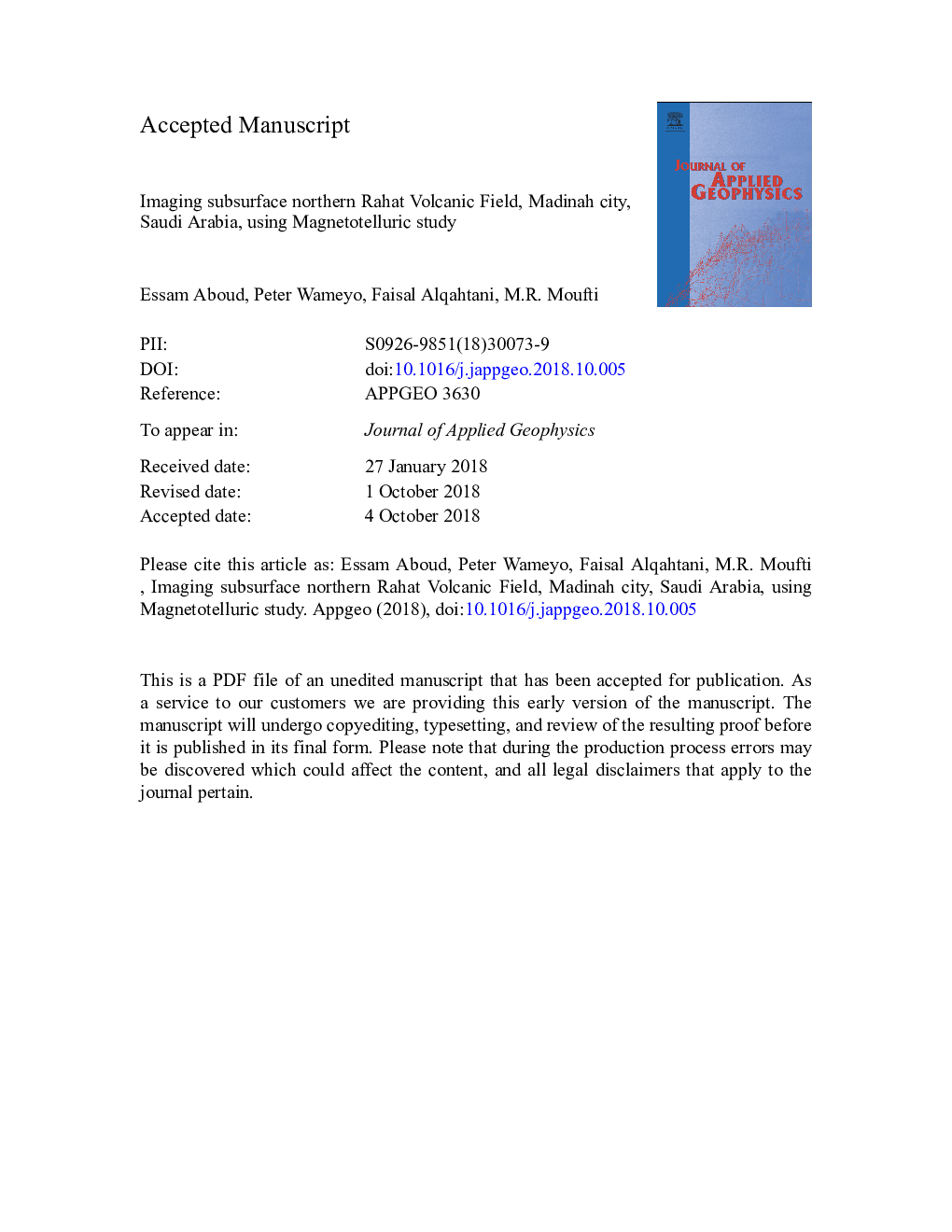| Article ID | Journal | Published Year | Pages | File Type |
|---|---|---|---|---|
| 11263911 | Journal of Applied Geophysics | 2018 | 18 Pages |
Abstract
Results from 3D inversion of the MT data revealed four major resistivity structures. The first is a layer of intermediate resistivity (40-250â¯Î©-meters) which is thicker (~800â¯m) to the south-west and thinner to the eastern edge, mostly covered by exposed Precambrian basement. This layer is underlain by resistive (>1000â¯Î©-metres) granitic basement. Intruding into the resistive basement are two near-vertical conductive (<20â¯Î©-metres) structures. One is located immediately west of the historic eruption (1256â¯CE) centre in the north, at a depth of about 15â¯km. The other intrusive is on the southern end of the survey area, also at a depth of about 15â¯km. Two conductive “channels” trending NW-SE and NE-SW were observed at depths of about 18â¯km. The NE-SW aligned “channel” runs through the northern intrusive while the NW-SE trending “channel” runs in the middle of the study area and connects both intrusive. The conductive intrusive and “channels” may be attribute partial melts stored in the pre-existing structures within the lower crust. Although the youngest known trachytic eruptions from the study area are several hundred thousand years old, recent and ongoing seismicity strongly suggest there may be magmatic activities in the lower and probably upper crust.
Related Topics
Physical Sciences and Engineering
Earth and Planetary Sciences
Geophysics
Authors
Essam Aboud, Peter Wameyo, Faisal Alqahtani, M.R. Moufti,
